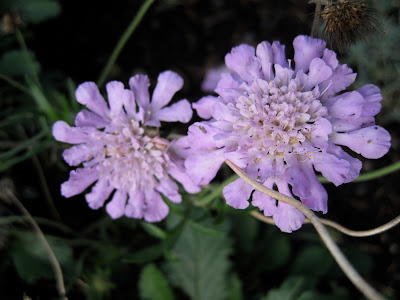The snow is gone now, the weather turned a bit warmer on Thanksgiving day, and then the next day almost all of it had washed away in the rain. It got up to about 40 degrees out there today, so I spent a couple of hours in my squishy garden cutting back all the mushy foliage.
Anyway, here is a warning -- you risk looking at pictures of garden ugliness if you continue to read on and scroll down!
I knew my Dahlias would turn. I need to figure out if I need to do anything special to them to try to ensure their survival over the winter. They risk getting water-logged if I do nothing. I'm trying to figure out if mulching them will help. Will it keep water in, or will it repel any future water? I think I will try a few experiments.
Mushy Dahlia foliage
Eupatorium 'Little Joe'
Lupine
Cardinal Flower
Chocolate Eupatorium
Rodgersia
Agastache 'Tutti-Frutti'
Persicaria 'Red Dragon'
Hydrangea quercifolia 'Alice'
Hydrangea quercifolia 'Litte Honey'
I've never grown Hydrangeas before, so I don't know if this is normal Fall behavior for them or not. I guess I'll find out come Spring.
Did you survive all those ugly pictures? Are you still with me? If you are, then you get to see my early Christmas present.
It's a NatureMill automatic compost bin! It actually came a couple of weeks ago, a surprise early Christmas present from my husband.
It runs on electric power, and has a motor to turn the stuff inside, as well as a heater to heat it up. It turns this --
The compost inside does get a bit stinky, but I have it outside on my sheltered back porch, where I have an outdoor electric outlet. I have to sprinkle sawdust pellets in it to balance the greens and browns. They are the same pellets that I use as cat litter, so my plan is to use used cat litter. The instructions say you can put solid cat waste in it too, cause it cooks it to get rid of pathogens, but I don't think I will chance that. I have always used the used cat litter in my compost, with the solids removed.
I have always been bad about dragging veggie peelings and food waste down to the compost bin way in the back. I'll still compost with that set of bins, but I'll do garden trimmings there.
So far, it's working great, and I love it!

















































